On March 12, 2014, the Academy hosted a program at its 2006th Stated Meeting about “At Berkeley,” a new documentary by Frederick Wiseman. The program included screened selections from the film, followed by a panel discussion with Frederick Wiseman (filmmaker), Robert J. Birgeneau (Chancellor Emeritus and Silverman Professor of Physics, Materials Science, and Engineering and Public Policy at the University of California, Berkeley), George W. Breslauer (Executive Vice Chancellor and Provost, Emeritus at the University of California, Berkeley), and Mark S. Schlissel (Provost of Brown University and President-Elect of the University of Michigan). Lawrence S. Bacow (President Emeritus of Tufts University and President-in-Residence in the Higher Education Program at the Harvard Graduate School of Education) moderated the discussion.
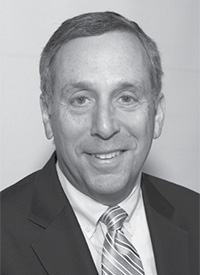
Lawrence S. Bacow
Lawrence S. Bacow is President Emeritus of Tufts University. He is currently serving as President-in-Residence in the Higher Education Program at the Harvard Graduate School of Education. He was elected a Fellow of the American Academy of Arts and Sciences in 2003.
I have the privilege of moderating the discussion this evening with Frederick Wiseman, our filmmaker, and with three individuals who were at Berkeley during the filming: Robert Birgeneau, George Breslauer, and Mark Schlissel. I will start the discussion with a question for Fred: Why did you decide to focus on higher education?
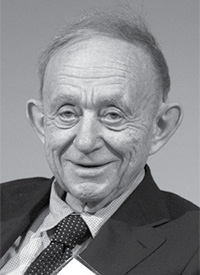
Frederick Wiseman
Frederick Wiseman is an independent filmmaker. He was elected a Fellow of the American Academy of Arts and Sciences in 1991.
I had been doing a series on education, and I wanted to focus on public universities. UC Berkeley is a great public university, and much to my surprise, I received permission to do the film there.
Lawrence Bacow
Did you go to Bob Birgeneau, who was then Chancellor of the university, or did you go to somebody else?
Frederick Wiseman
I went to Bob; you always go to the top.
Lawrence Bacow
Bob, I am curious who you had to talk to before you were willing to commit to this project, and what you thought the risks were in letting someone come in and shoot 250 hours of film on your campus. How did you get other people to agree to participate?
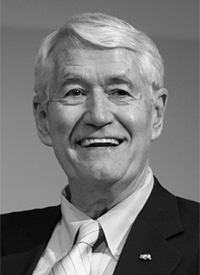
Robert J. Birgeneau
Robert J. Birgeneau is Chancellor Emeritus and Silverman Professor of Physics, Materials Science, and Engineering and Public Policy of the University of California, Berkeley. He was elected a Fellow of the American Academy of Arts and Sciences in 1987.
Fredrick first contacted Candace Slater, the English professor who is speaking in the very first vignette that we saw earlier. Candace had been head of our Townsend Humanities Center when Fred visited Berkeley for a week in the mid-1990s.
She sent me an email saying that Fred Wiseman was interested in making a film about Berkeley. Anyone who has lived in Massachusetts for any length of time, as I have, knows of Fred because of his film Titicut Follies, which helped transform mental health care in the state of Massachusetts.
Berkeley is a place where we like to believe that we live on the edge, so if Berkeley’s not willing to consider this kind of project, then probably no other institution in the country would. I thought that at the minimum it was a very interesting idea. I initially discussed Fred’s proposal with George Breslauer, provost of the university, who was a little more skeptical than I was. (I will let George talk about that later.)
Subsequently, I called the people in our journalism and film departments, asking them what they thought. Fred is such a hero to people in film studies and filmmaking, so their response was incredibly positive. They convinced us to meet with Fred in person to explore the possibility further.
We invited Fred to campus to begin having a conversation. One of the first observations that he made was that Harvard, MIT, and Berkeley appear in more than a hundred Hollywood films, including Love Story (Harvard), Basic Instinct and The Graduate (Berkeley), and Good Will Hunting (MIT). This gives you a taste of how universities are typically portrayed in movies. Fred said that by contrast he wanted to make a film showing how universities, which are very complex institutions, actually run. I thought that this was a fascinating idea.
Obviously, there were some risks, but we decided that these were risks worth taking. In addition, Fred was very persuasive; among other things, he convinced us that he was sincere.
Lawrence Bacow
My guess, George, is that you and Bob could get together and decide this was a good idea, but maybe not everyone else on campus would follow your lead. What was the process like in persuading faculty members and students to allow Fred into their classrooms?
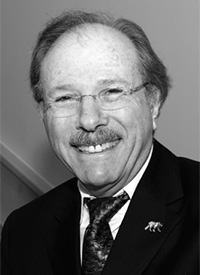
George W. Breslauer
George W. Breslauer is Professor of the Graduate School; Professor of Political Science, Emeritus; and Executive Vice Chancellor and Provost, Emeritus at the University of California, Berkeley. He was elected a Fellow of the American Academy of Arts and Sciences in 2014.
It is true that we made the decision jointly and did not really ask anybody else. We did not do a market survey to figure out whether people would lock their doors if Fred’s cameras were approaching. We did not ask the Academic Senate or seek any other such approval.
Lawrence Bacow
Did you get anyone to sign a release?
George Breslauer
No. We did not get major blowback, but sometimes Fred was closed out, or he would get frustrated that enough doors were not being opened. He would then come to me and say, “I can’t do this film unless you get some doors opened.” I would make a phone call or send an email to a professor in that particular unit that I thought would be especially responsive to my pleading for openness. Much to my delight, they agreed most of the time.
There were some areas where he simply was not allowed, and we were in fact persuaded that he should not be allowed: for example, when leaders in our development office were discussing donors and strategies for approaching donors.
Lawrence Bacow
Mark, you were a faculty member and a dean at Berkeley when all of this was going on. I am interested in your perspective.
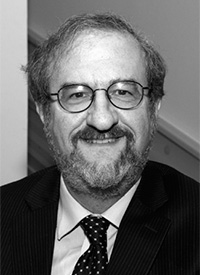
Mark Schlissel
Mark Schlissel is Provost of Brown University and President-Elect of the University of Michigan.
We were presented with the opportunity to project an image of Berkeley, and that is something the faculty and the leadership were extremely proud to be part of. We did not have as much fear as you might imagine we would have.
George and Bob, when they set this up, had Fred agree that if we asked him to stop and leave, he would stop and leave. So the hardest part was just getting used to somebody with a camera and a sound boom 12 inches from your face as you were in discussion. Once you forgot he was there, we just went about our business.
Lawrence Bacow
Did you get asked to leave very often, Fred?
Frederick Wiseman
No.
Lawrence Bacow
Were there times in which you thought it was hard to tell the story that you wanted to tell?
Frederick Wiseman
I did not really know the story I wanted to tell. I discovered the story in the editing. While I was at Berkeley, all I tried to do was stimulate sequences that I thought would be interesting. I used only one-sixtieth of the total material I collected. In the kind of filmmaking I do, there is no script, no story, no thesis in advance.
Lawrence Bacow
Was there a time for any of the three of you when you were nervous about what was being recorded in real time?
Robert Birgeneau
Just to add a couple of details to what Fred said in terms of the agreement – we actually did not have a signed contract when he first started to film. That turned out to be a good thing because in one of the early meetings involving the university’s chief leadership team, I said something quite inappropriate. I could see my associate chancellor turn purple because it was now captured on film.
So for the sake of Berkeley’s interests and well-being, I went and talked to our lawyer, and after a bit of back and forth, Fred ultimately agreed that people like myself would have a forty-eight-hour window in which to insist that a particular segment be removed. Fred was, of course, correctly reluctant to agree to that, because he thought he might lose the juiciest parts.
The only person who ended up exercising that right was me, and I did so five times. And five out of five times, it was about politicians in Sacramento.
Lawrence Bacow
Fred, in making this film, what do you think is the most powerful insight you had about either Berkeley or higher education in general?
Frederick Wiseman
I did not really know much about Berkeley before I started. What I think I learned, and what I hope the film shows, is the devotion on the part of a lot of people in the administration to maintaining the standards and integrity of the university.
Lawrence Bacow
One of the things the film does quite remarkably is to convey the complexity and texture of an institution of this greatness. Everybody who went to college thinks they can run one. This film helps counter that feeling by showing that a lot goes into the decision-making.
Was there any time, George, that the routine decision-making that goes on in a provost’s office was in any way altered or influenced by the presence of the camera?
George Breslauer
That is a question that is always asked, and entirely legitimately so, because you would assume that people would be self-conscious about being filmed. In the sequences in which I happened to be involved, I was struck by how quickly we simply went on with our work and saw the camera and sound mic almost like a fly on the wall. At the time of filming, Berkeley was going through some difficulties. We did not have the luxury of wasting meetings playing to the camera or saying things that we would not have otherwise said.
Robert Birgeneau
Another way you may have asked the question is, are there things we wish were in the movie that are not? Fred would say no, but for me the answer is yes. One of the major issues that we had to deal with locally and at the state and national levels was the challenges faced by our undocumented students. In California, we have a very large number of these students. You may not know that Berkeley was the first university in the United States to offer comprehensive financial aid to undocumented students, something we are very proud of. Fred got to film the beginnings of that. We had an undergraduate student organization called RISE, Rising Immigrant Students for Education, which was a cover for our undocumented students. RISE had about forty students, the vast majority of whom were Chicano. The president of RISE came to talk to me about how we could make progress on the political front for undocumented students in this country. Fred found this meeting on my schedule, and we agreed that he could film it. But during that autumn, it happened that one of the Republican candidates for governor of California promised to send the immigration police onto the California university and college campuses to grab all the undocumented students and deport them. And so not surprisingly, I was uncomfortable about having this undocumented student filmed by Fred. When we had the meeting, the student actually wanted to be filmed because he wanted his story heard, so Fred agreed to film him from the back.
This was perhaps the most extraordinary half hour of my entire service as Chancellor at Berkeley, because this young man talked in detail about his life as an undocumented person. His mother worked in a sweatshop in Los Angeles. The student described all the challenges that he had faced and continued to encounter, any one of which might well totally defeat an ordinary student. That meeting was so important to me personally, that I immediately became politically active on behalf of our DREAMers. We got bills providing financial aid to undocumented students passed in the state senate. I met with the governor on this issue four times, and he ultimately signed the bills into law. California thereby became the first state in the union to enact legislation allowing public universities to provide full financial aid to undocumented students. So it was a phenomenal success, Fred captured it, and yet it is not in the documentary. So I asked Fred, “How could you not include this? It is the single most important thing that happened in the entire 250 hours of filming.” And he replied correctly – which shows that I am an academic, not a filmmaker – that since he shot from the back what he captured may have been “important politically, but it makes for bad film.”
Lawrence Bacow
Berkeley does not have its own board of regents, but rather there is a California system-wide board of regents. What do you think the conversation would be like if you had to persuade a board that this was a project worth undertaking?
Robert Birgeneau
Berkeley is almost ungoverned from above; there is no equivalent of the Harvard Corporation or the MIT Corporation. There are the Regents, but they are well separated from the individual campuses. There was no one to ask for permission, because there was virtually no one immediately in charge.
George Breslauer
We mentioned earlier that the internal workings of the development office were not part of the film. Neither was the office of the president, which is the presidency over the entire California system. The regents were also not part of the film. So the broader governance structure that constrains the choices that we make at the campus level was not visible in the film. One of the things that attracted us to Fred’s offer to make this film was his feeling that no one had ever looked at how higher education institutions are governed. Others have looked at what happens at universities, whether in the teaching realm or the social realm, but not at how they are governed. What was unique about this film was its ability to peer into the chancellor- and provost-level discussions of what to do, given the perceived options. But it did not go into the deliberations of those people or governing bodies that constrained our options.
Question and Answer Session
Question
What years were covered in the film?
Frederick Wiseman
The film was shot between August and November 2010.
Robert Birgeneau
That was an important period. When I started as chancellor of Berkeley in 2004, the state provided about 30 percent of our budget. There was a commitment from Governor Schwarzenegger that this amount would go up progressively, year by year. By 2010, we had suffered two consecutive years of precipitous cuts, with state funding very quickly dropping from 30 percent to 16 percent. We lost the salaries of close to half of our staff in a two-year period. And so the film captured the whole university trying to deal with a level of disinvestment that was literally unprecedented in the history of the University of California.
Comment from the Audience
For those of us who were watching what was going on in California from a distance, it was quite extraordinary. Other institutions were trying to take advantage of all the furloughs in the California system by raiding your faculty right and left. The leadership of Berkeley at that time did an extraordinary job. Fred, I am glad that you let the rest of us observe some of the important decisions in real time. We all owe you guys a debt of gratitude for preserving one of the jewels in the crown of American public higher education.
Robert Birgeneau
At the time I asked George, “Why aren’t we losing faculty? Why haven’t the East Coast private universities been more successful in disassembling our university while the state disinvests?” I think the faculty stayed because of one another: the density of quality scholars and the shared commitment to research and teaching as well as our public purpose. It is hard to imagine a better place to be a scholar.
Question
What has been the reaction to the film, particularly outside of the university and perhaps in the political arena? Has it led to more awareness of what universities face?
Robert Birgeneau
People who have seen this film have been very appreciative of just how rich and complex these institutions are. However, that does not mean that anyone has come down from Sacramento to say, “I am sorry that we did this horrible thing to you.” On the other hand, as we went through the worst parts of the state disinvestment, our donors, alumni, and friends finally became aware that our financial model was now not that different from that of MIT, Yale, or Harvard, and that they needed to step up in the same way that the alumni of these and many other private universities routinely do. Our alumni offered support in a way that was really marvelous during a terrible period of state disinvestment.
George Breslauer
We have been monitoring the reviews of the film, including those from closer to home in the Bay Area. What is striking is how a large majority of the reviews from outside the Bay Area are highly appreciative of the film, either because of Fred Wiseman’s craftsmanship or because of the university displayed, or sometimes both. In the Bay Area reviews, there is a lot of negativity and snark. Newspapers in the Bay Area have a tendency to haze the administrators and valorize the protestors. By contrast, the protestors featured in the film come across as rather vapid, and the administrators come across as struggling to deal with difficult choices. That was not music to the ears of the local newspaper editorial boards.
Question
Quiet scholarship is an essential part of a university, but I imagine that must be hard to portray cinematically. Did you try?
Frederick Wiseman
I did not try to do that. I was not sure that I knew how to capture “quiet scholarship.”
Robert Birgeneau
There is one exception: a wonderful segment where Saul Perlmutter is conducting a research seminar. This was one year before Saul received the Nobel Prize for the very work that he was discussing in that seminar. At the end of the segment featuring that seminar, at least at the New York Film Festival, the entire audience burst out in laughter – not because Saul was so funny, which he can be, but because the subject matter was so incomprehensible to a general audience.
One of the aspects of the film that I like best is the classroom scenes, in which really great scholars are teaching undergraduates. Fred captured a lot of this, and the film manages to make you think, “Boy, would I like to be an undergraduate again and be in that class!” In this respect, the film is an advertisement for the exciting work that goes on at great research universities in general, public or private.
Lawrence Bacow
It is also a great advertisement for what happens when we actually bring real faculty together with real students in a residential setting in real time. We hear a lot about how these great residential institutions are going to become dinosaurs, because we will be able to provide all this education digitally. One of the things the film does brilliantly is to illustrate the magic that happens in an actual classroom.
Question
Is the film meant to portray what Berkeley is about, or is it a film about what higher education is capable of within the broader public education landscape?
George Breslauer
I think of this film as if you are looking at a hundred impressionist paintings on recurring themes. The paintings are lined up side by side, and you have two-and-a-half minutes on average in front of each one. The themes would recur over the course of the film’s four hours, and you gain an impression in the process. The pastoral scenes could be any other university. The classroom scenes could be any other great university. The extracurricular student activities could be any other great university, whether it is music-related activities or ROTC or throwing a Frisbee on the lawn. What is unique to Berkeley, I think, is the deliberation among the administrators with regard to handling the crisis in which we found ourselves.
Mark Schlissel
Having been at a number of different institutions, I can report that all our institutions are dealing with the same problems. Yet it seems as if they bubble up first at Berkeley, and get first addressed there, too. Consider undocumented students, as Bob mentioned earlier. Universities across the country are devising ways to deal with this issue at a political, social, and financial level. Other aspects that have to do with budget crises or calling in consultants or looking at how we do the back office part of running a university. Berkeley is big enough, ambitious enough, and complex enough that it is somewhat of a canary in a coal mine for the higher education sector as a whole.
Question
Is there a record of what the reaction to the film has been in places outside the United States?
Robert Birgeneau
Just last week I received an email from President François Hollande’s press attaché extolling the virtues of the movie, and of Berkeley, and saying that she was going to make sure that her daughter got her university education at Berkeley. But this film is not just about Berkeley; it is about how the American research university is a unique institution. Even though we copied the form from the Germans, we now do universities a lot better than any other country in the world except, perhaps, Great Britain.
Lawrence Bacow
Can you explain how you financed the film?
Frederick Wiseman
There are only eight or ten places in the world where I can go for money. I usually get about 15 percent of my budget from PBS, with other contributions from a combination of sources such as the Ford Foundation, the National Endowment for the Arts, the Independent Television Service (ITVS), the BBC, or French television. (I made a couple of films in France, so I have been eligible for French subsidies.) Sometimes I have money from private foundations.
Lawrence Bacow
I just have to observe that many of those in Congress who have been hostile to higher education have also been hostile to some of the sources that have been funding your films.
Question
Did you document the relationship between the academic side of Berkeley and its athletic prowess?
Frederick Wiseman
We did about ninety seconds of football and maybe sixty-five seconds of women’s field hockey.
Question
How do you explain these rather strange relationships we have between major universities and public entertainment, particularly in terms of athletics?
Mark Schlissel
It is a real challenge getting the balance right. The sports entertainment business brings great notoriety to our universities. Many of our peers claim that application numbers go up when the home team has a good season. We must not, though, lose sight of the fact that we are academic institutions, and sports are auxiliary, an extracurricular activity. You have to keep that separation in mind while recognizing the community-building aspects of intercollegiate sports.
Robert Birgeneau
Just one factoid: an important role that men’s football and men’s basketball play is that they generate a lot of income, and that income supports our Olympic sports. In the London summer Olympics, Berkeley athletes, including both current students and graduates, won the same number of gold medals as did France and Germany. And four of the Pac-12 schools – Berkeley, UCLA, Stanford, and USC – account for nearly one half of the gold medals that the United States has won historically in the summer Olympics.
One of the things I had to do in the middle of the funding challenges, because the faculty demanded it and we really had no choice, was to announce at a press conference (which Fred filmed, but thank God did not put in the film) that Berkeley would no longer have varsity rugby, men’s baseball, women’s lacrosse, or men’s and women’s gymnastics. If you ever want to receive vitriolic email, hateful beyond belief, just try cutting major sports like baseball and rugby.
I had seen this coming a year in advance because the intercollegiate athletics budget was spiraling out of control, so that we were not going to be able to continue to support our athletics program in the way that we traditionally had. And so I sent an email to our major donors to athletics, saying that their sports were in danger and they needed to step up. They didn’t, and so we announced that we were being forced to cut the sports. Then the alumni athletic supporters all came to me and asked what they could do. Baseball, which had been raising about $300,000 a year to support the team, magically raised $10 million in six weeks immediately after we announced the prospective demise of the team as a varsity sport. The same thing happened in rugby. It was an extraordinary phenomenon.
One of the people who gave $1 million to baseball also gave $5 million to support academic programs in Public Policy. So, had we not saved the baseball team, we might well not have received the $5 million for Public Policy. At a PAC-12 university like Berkeley academic and athletic philanthropy are much more tightly connected than you could ever imagine.
George Breslauer
We have very few donors who give only to athletics. When you look at the list of major donors to athletics, for the most part they also make large donations to the academic side.
© 2014 by Lawrence S. Bacow, Frederick Wiseman, Robert J. Birgeneau, George W. Breslauer, and Mark Schlissel, respectively
To view or listen to the presentations, visit https://www.amacad.org/atberkeley.